What Mob Family Did the Irishman Assiciate With
Here'southward The True Story Behind The Irishman
At first glance, The Irishman has everything 99 pct of cinema-goers could maybe desire. The cast list is filled with heavy hitters like Robert De Niro, Al Pacino, and Joe Pesci (who we haven't heard from in a while), and league-of-his-ain Martin Scorsese is at the helm. It's got the mafia, ridiculous conspiracy theories, shadowy figures with a terrifying amount of power, and — it claims — the answer to ane of recent history'southward most notorious unsolved crimes.
But does information technology actually have the correct answer?
The Irishman isn't alone in challenge to be based on a true story. It was adapted from the book I Heard You Paint Houses, written by Charles Brandt and based on interviews with Frank "The Irishman" Sheeran (via The Guardian), but here's the thing — he'southward non the almost reliable narrator when it comes to pesky things like "the truth." Sheeran tells a fascinating tale, for certain, and he puts himself correct in the heart of everything from the Bay of Pigs and the Kennedy assassination to, of grade, Jimmy Hoffa's disappearance. Could one person really be involved in all that? Considering we really just have his word on the matter and others on that item side of the police are notoriously tight-lipped, at that place's a lot that'south only not known. Snitches might go stitches, but on the flip side, nosotros practise know a bit about the real events depicted in Scorsese's epic.
Who was Frank Sheeran ... actually?
Frank Sheeran (Robert De Niro) is the Irishman at the centre of The Irishman, and Slate did a deep swoop into the claims he fabricated in Charles Brandt'southward I Heard Yous Paint Houses. Substantially, Sheeran said he was coming clean — he knew he was nearing the end of his life, and he wanted to confess the secrets he'd been carrying around for decades. Then what's the real story?
While there's no existent way to definitively prove or disprove many of his claims, they did find that he was — past well-nigh accounts — a minor player in the South Philadelphia mafia who really did hang with the likes of Russell Bufalino. Merely those who knew him said he was a far cry from the version brought to the screen. One of his contemporaries in the Irish mafia, John Carlyle Berkery, described him like this: "Frank Sheeran never killed a fly. The only things he ever killed were endless jugs of wine. Y'all could tell how boozer he was by the color of his teeth: pinkish, just started; dark imperial, stiff."
They interviewed FBI agents, constabulary enforcement, prosecutors, and reporters, and no one had always even suspected him of killing anyone. He did get police enforcement's attention a few times: he one time shell up a non-union truck driver, and he was indicted for the murder of union rivals, but hired others to actually exercise the killing.
Was JFK's election really thanks to the mob?
Mob influence reaches a long, long way, and The Irishman shows names being plucked grade tombstones and so registering votes for JFK. Did that happen?
According to an investigation by the New York Herald Tribune and The Washington Post (via Newsweek), yes, it did. Earl Mazo was a reporter who headed up a planned 12-part series on election fraud, and one of the things he found when he started matching voter names and addresses was that some of those names were, indeed, taken from tombstones in a Chicago cemetery. Others were registered to a firm that had been gutted by fire, and stood abandoned — simply had 56 voters registered as living there. Only 4 of the stories in the serial were e'er run, and the rest were squashed subsequently a phone call from Richard Nixon.
That's not the only time claims of election interference were brought up. In 1997, the Los Angeles Times reported on a book that claimed JFK had been elected with help from the mafia, who made sure he won the land of Illinois. That book was, of course, highly controversial, but the 1960 presidential ballot was surrounded by accusations of voter fraud, recounts, and, says Slate, counties where the votes were then overwhelmingly in Kennedy's favor that they but had to exist disputed.
Crazy Joe Gallo's murder is officially still unsolved
According to Sheeran, he was the one who killed Crazy Joe Gallo as he dined with his family at Umberto's Clam Firm. The motive? He says it was all because Gallo was rude to Sheeran's boss and friend, Russell Bufalino (Joe Pesci). Bufalino gave the nod, and Sheeran gave him a hail of bullets. But that'due south not the official story at all — that was bankrupt wide open past Nicolas Gage, a reporter for The New York Times who had (via Slate) spent years roofing the mob. He told a different tale.
When The New York Times ran their story, they reported the killing had come because of a dispute with the Colombo family. They had marked Gallo for decease months before he was killed, and everyone in the family unit knew it. When an informant named Joseph Luparelli saw Gallo at Umberto's, he got up, left, and headed straight for a nearby restaurant where he knew he could find representatives of the Colombo family. He found them, told them where to find Gallo, and within 45 minutes they were dorsum at Umberto's and armed to the teeth.
Gallo was eating dinner with his family when he was shot, and his new married woman, Sina Essary, described the hitmen equally "little, curt, fat Italians," which is absolutely goose egg like a description of the half-dozen-human foot-4 homo known as The Irishman.
Did Frank Sheeran assistance kill JFK?
It's just a single line, uttered by Joe Pesci'southward Russell Bufalino. It has huge implications, though, and information technology'southward this: "If they tin can knock off a president, they tin can knock off the president of a union."
He'due south talking virtually the thought that the mafia was behind the assassination of JFK, and Esquire says 1 of the confessions Sheeran made to Brandt was that he had been the 1 to delivered rifles to Dallas — rifles that were the same kind used to kill Kennedy. Scorsese left that incident out of the movie because, he told IndieWire, it crossed simply a little too far into conspiracy theory territory, and he didn't want to take away from the rest of the story the characters had to tell. But the real Sheeran did make the claim ... so is information technology true?
No. The National Archives contains a huge amount of information on things that have come out near the Kennedy assassination, including details on the Mannlicher-Carcano rifle that had been left in the Texas School Volume Depository. It had originally come from Crescent Firearms, and was shipped to Klien'south Sporting Appurtenances in Chicago. In that location, information technology was bought by someone named A. Hidell and shipped to Dallas, Texas. The handwriting on the lodge form was a friction match to the handwriting of Lee Harvey Oswald, and the P.O. box it was shipped to had been rented by him too.
Jimmy Hoffa, the mob, and Las Vegas
Jimmy Hoffa (Al Pacino) is a larger-than-life figure with a life that'south just every bit fascinating as his death, and one of the claims made in The Irishman is that he had his hands in pretty much everything — and he did. And yes, co-ordinate to the Los Angeles Times, that absolutely includes loaning Teamster coin to the mobsters that built Las Vegas.
Throughout the 1950s and 60s, hundreds of millions of dollars from the Teamsters Central States Mention Fund were funneled into Vegas through mobsters like Moe Dalitz. (Hoffa also had a stake in New York City taxi drivers, too — when he set his sights on taking control of some 30,000-odd cabbies, he had help in that location from labor extortionist Johnny Dio.)
At the time, there was somewhere around a billion dollars in the pension fund, which Vanity Fair says Hoffa created by consolidating the pension funds from across 22 dissimilar states. Payments went from the fund to Vegas hotels through Hoffa and attorney-to-the-mob, Sidney Korshak, who not simply helped get casinos like the MGM built, but who charged a more-than-generous fee for his services.
What, exactly, were the circumstances of Jimmy Hoffa's disappearance?
At the heart of The Irishman is the mystery of what happened to Jimmy Hoffa. And then how does what nosotros know stack up with what they showed? According to Biography, Hoffa really was at the Machus Red Trick Restaurant in Bloomfield Township, Michigan, on July 30, 1975. He had driven there in a dark-green Pontiac Yard Ville, and was waiting for Anthony Giacalone and Anthony "Tony Pro" Provenzano. The point of the meeting? To mend some fences, just both parties have consistently denied there was whatever such meeting scheduled (via The New York Times). At two:15 he called his wife to say he planned on being home by 4 p.1000. He never went abode, though, and his car was found in the restaurant's parking lot the next morning.
The disappearance of the gangster came — as The Irishman suggests — not long after Hoffa received a controversial presidential pardon from Richard Nixon. Function of the deal was that he was supposed to stay out of union business organisation until 1980, just he was already in the process of trying to accept power back from Frank Fitzsimmons.
There was a unmarried concrete lead in the example — dogs detected Hoffa's smell in the back of a Mercury Marquis Brougham, belonging to the son of one of the two men Hoffa had been waiting to meet with. Nothing ever came of it, though, and in 1982, Hoffa was officially declared dead.
The blood at the firm where Jimmy Hoffa (supposedly) died
When Sheeran'south biography was released, police enforcement took the claims seriously. Since he specified exactly which house he had killed Hoffa in, authorities were able to become there and look for any evidence that may accept been left behind by a clean-upwards coiffure. According to CNN, amongst the kickoff to deport an investigation were two retired police officers hired by Fox News. They claimed to have found "seven to eight" spots of blood on the home'southward floorboards, which led to more government beingness brought in on the case.
County Prosecutor David Gorcyca was doubtful anything would come of the investigation, and was quick to add together that it wasn't fifty-fifty clear the claret on the floor was human.
That was in May 2004. Fast forward almost a yr, and a very, very short update went out through the Associated Press (via Deseret News). The claret constitute on the floor was not, in fact, Jimmy Hoffa's. It was another Sheeran merits that was short on proof.
That fish? It was a salmon
The Irishman shows Hoffa getting into a car at the Machus Cerise Trick, i driven by Chuckie O'Brien. There's a very long conversation well-nigh a moisture spot on the dorsum seat, and the car'southward occupants discuss it. O'Brien says information technology was from a fish he'd but dropped off to a friend, and the conversation just keeps going. They talk about what kind of fish it was, why he was delivering a fish ... it's a weird scene that doesn't really get anywhere, simply there's actually a point to it.
According to a 1975 commodity in The New York Times, investigators actually did find stains in the back seat of a car owned past Joseph Giacalone and borrowed past Chuckie O'Brien. He insisted that information technology was blood from a salmon he had just delivered to a friend, and further investigation confirmed that yeah, it was fish blood.
At the time, it was a large deal. It looked similar a smoking gun as far as evidence was concerned, and ended up being the precise — albeit strange — affair that O'Brien had insisted information technology was, and instead of giving investigators some serious bear witness, it went nowhere.
What are some of the theories of what happened?
Hoffa's trunk has never been found, and at that place's a very elementary, very logical caption, according to The Irishman: he was cremated. Even Sheeran's staunchest skeptics have to admit that makes a lot of sense. Why transport the torso somewhere and bury it when you could but dispose of it permanently and hands right where he was killed?
The investigation that followed Jimmy Hoffa's disappearance was the very definition of a circus. Around 70 people were put in front of a yard jury, law enforcement dug a lot of holes based on a lot of dead-end tips, and a hypnotist was even called in to work with the employees of the restaurant Hoffa had disappeared from. And some of the long-standing theories about what happened to Hoffa are way more implausible than Sheeran's story. Buried under Giants Stadium? Really? Talk near an unnecessary amount of work and risk.
In 1976, the FBI compiled the Hoffex, essentially a list of all suspects and persons of involvement in the case. Now, the big question: was Sheeran on information technology? Aye. He was the last entry in a section titled "Suspects Outside of Michigan," and he was described as a "known associate" of Russell Bufalino. He was also known to have been in Detroit at the time Hoffa disappeared, and was, indeed, known to be a close friend of the union leader.
Frank Sheeran previously said he didn't do it
Here'due south the thing almost Sheeran — his tell-all confessional to Charles Brandt isn't the first fourth dimension he spoke out about what happened to Hoffa, and information technology wasn't even the second. Sheeran has told a ton of different versions of the story over the years.
In 1995, he spoke with The Philadelphia Daily News and made some wild claims. Co-ordinate to that story, he was going to tell his biographer (then John Zeitts) the truth, including: "I did non kill Hoffa. I had nothing to do with information technology. But I never had the reply until 1988." He went on to merits that Hoffa had been killed by contract killers hired by Nixon and the White Firm, and too said the trunk would never exist found. Within a year, he came frontwards claiming to have documents that showed the location of Hoffa'due south remains afterward all, and by then he was claiming Nixon had hired Vietnamese mercenaries to kill Hoffa.
It wasn't until 2001 that Sheeran first claimed to have been the 1 who really killed Hoffa (via NY Books). At the time, various news outlets declined running with his story because of his track record of making false claims, and betwixt 2001 and 2003, he alternately said he had killed Hoffa in a motorcar before destroying the trunk and the evidence, that he just disposed of the torso but hadn't killed him, and then finally he recited the tale that made it into The Irishman.
The compelling evidence for Chuckie O'Brien's innocence
The Irishman includes one claim that'south been repeated often — Hoffa'due south long-time friend and aide Chuckie O'Brien was the one who picked him up and drove him to his death. That's been said a lot, but according to old Justice Section legal counsel and Harvard law professor Jack Goldsmith, information technology's admittedly not true.
Goldsmith has a personal connection to the matter — he's O'Brien'south stepson, and he was 12-years-quondam when Hoffa disappeared. He'due south spent years trying to clear his stepfather's name, and has condemned The Irishman for repeating the accusations that destroyed O'Brien's life. That'south in spite of the fact, he says, O'Brien had an alibi and was never charged with anything associated with Hoffa's disappearance.
Goldsmith has written extensively (via NY Books) on Hoffa's disappearance and on his stepfather'southward innocence, and says there's a few huge problems with telling Sheeran's tale in such a high-profile way. One is the repetition of O'Brien's interest — which the FBI and law enforcement take acknowledged didn't happen as it'south portrayed — and that's put a very bright spotlight on someone who's still alive. He says information technology also distracts from the larger bug of Hoffa's sprawling control over so many aspects of the nation's economic system, which is largely overlooked in favor of telling the far juicier story of murder ... true or not.
Robert De Niro was cautioned confronting making The Irishman
Robert De Niro got the rights to make The Irishman based on Brandt'due south book in 2007, and investigative announcer and Hoffa author Dan Moldea says he spent a good amount of time warning De Niro that he had been "conned," and that he was making a movie based on a completely false confession. It wasn't the beginning time Moldea had something to say about Sheeran's confession, either — when the book came out, Moldea went on the offensive condemning it as pure fiction (via Deadline Detroit).
When push comes to shove, many of the claims made in The Irishman are a matter of he-said, he-said. At that place's no way to testify or disprove a lot of it, that's just the nature of this sort of moving picture — especially when it's based around a long-standing mystery, and especially when near of the chief characters are dead.
But De Niro has since come out with a statement that's pretty interesting, and he addresses the backfire around the accuracy of the film. He had this to say (via Movie theatre Blend): "I wasn't getting conned. I have no trouble with people disagreeing. ... we're not saying we're telling the actual story, we're telling our story. I believed information technology." So, there you accept information technology. De Niro believed in it, not many other people practise, he doesn't merits it's the truth, and as for Hoffa's disappearance? It's still not known what happened to him, and information technology'll probably always stay a mystery.
Source: https://www.grunge.com/176351/heres-the-true-story-behind-the-irishman/
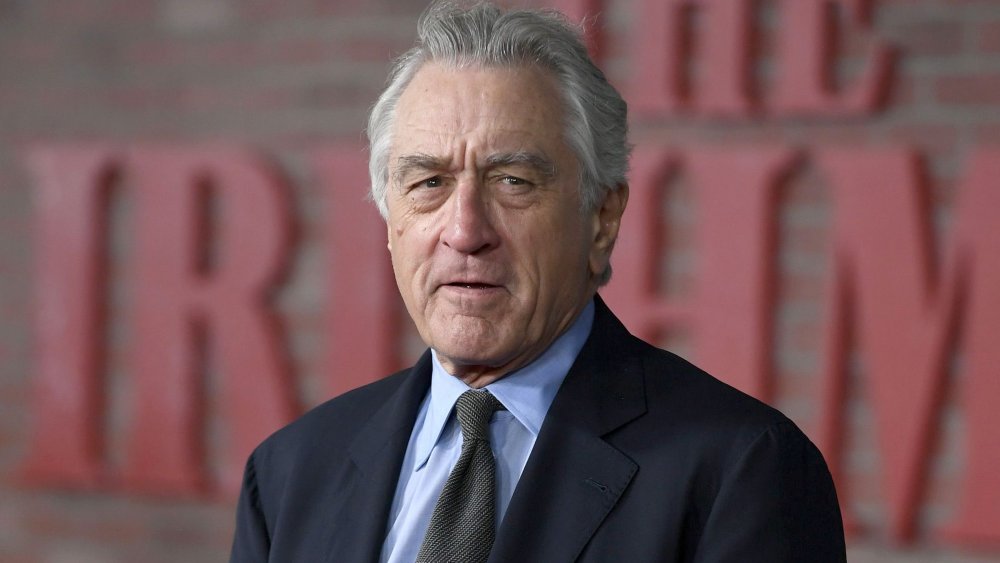
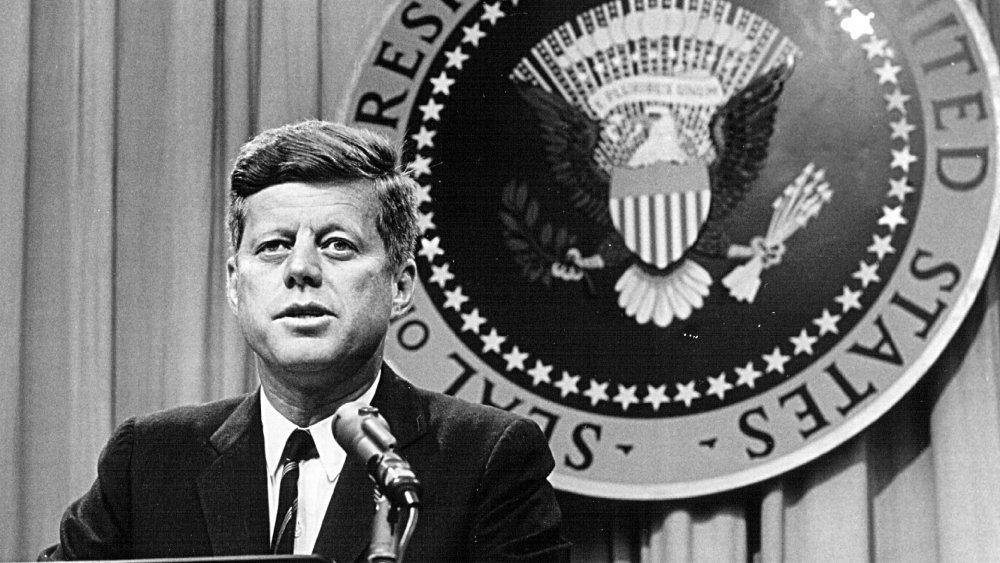
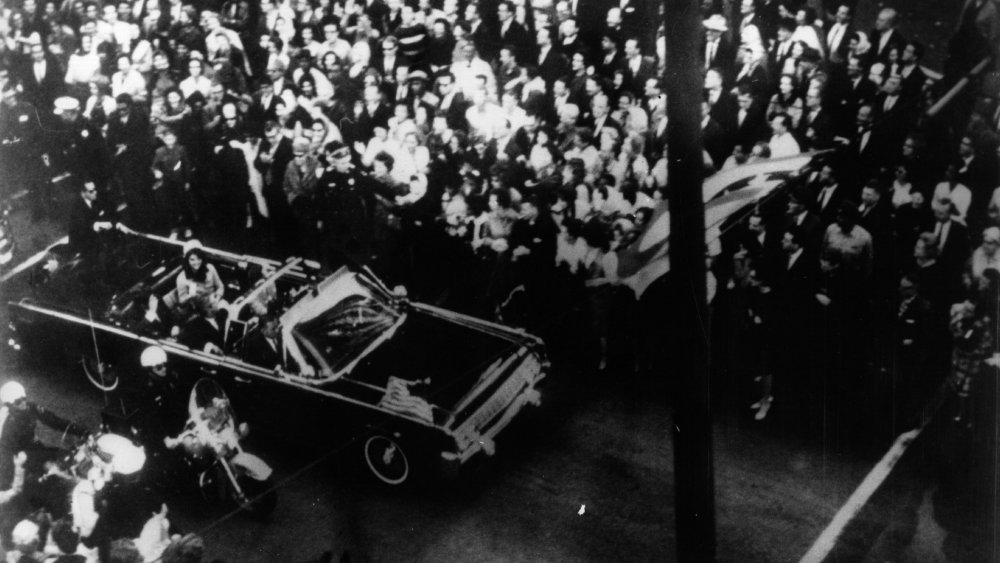
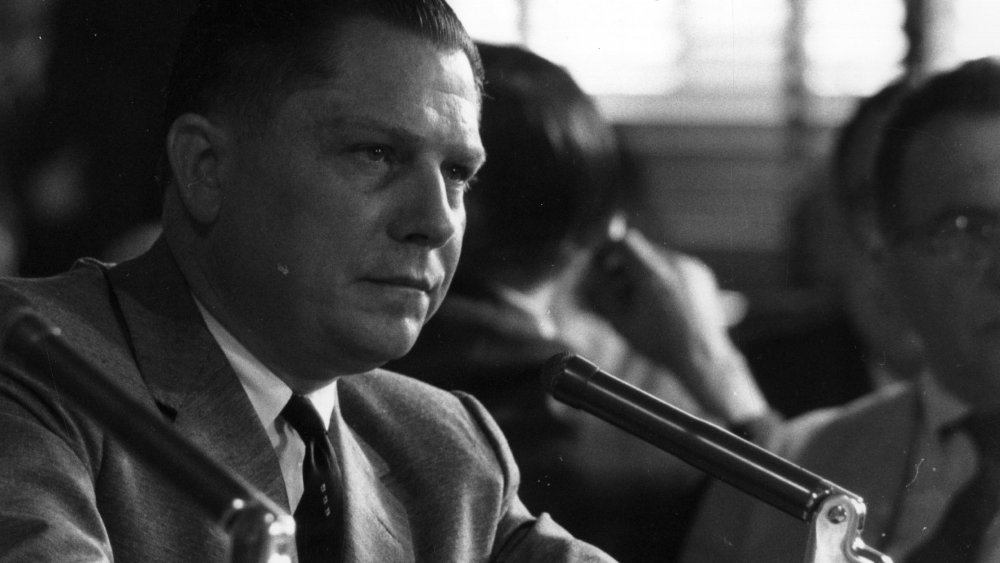
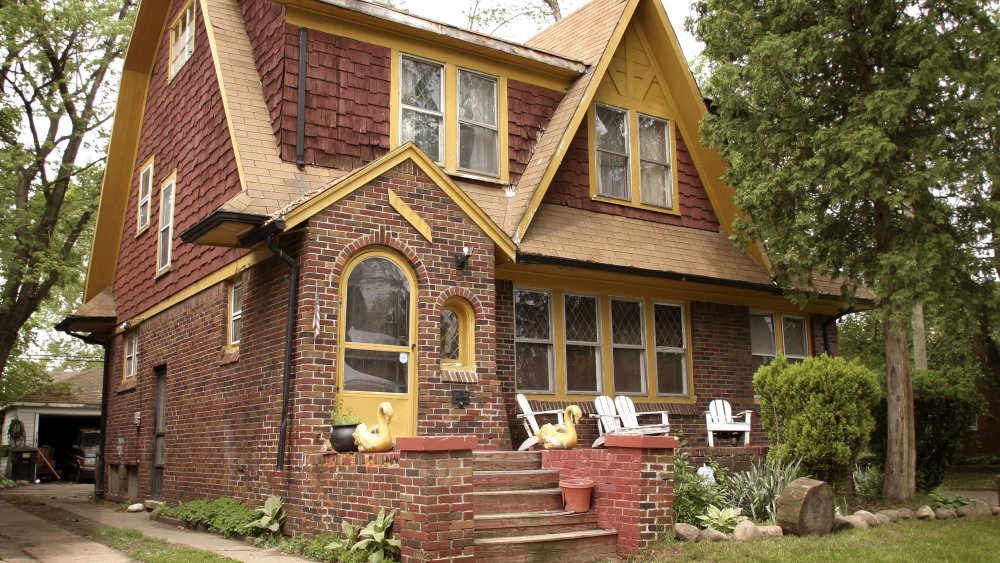
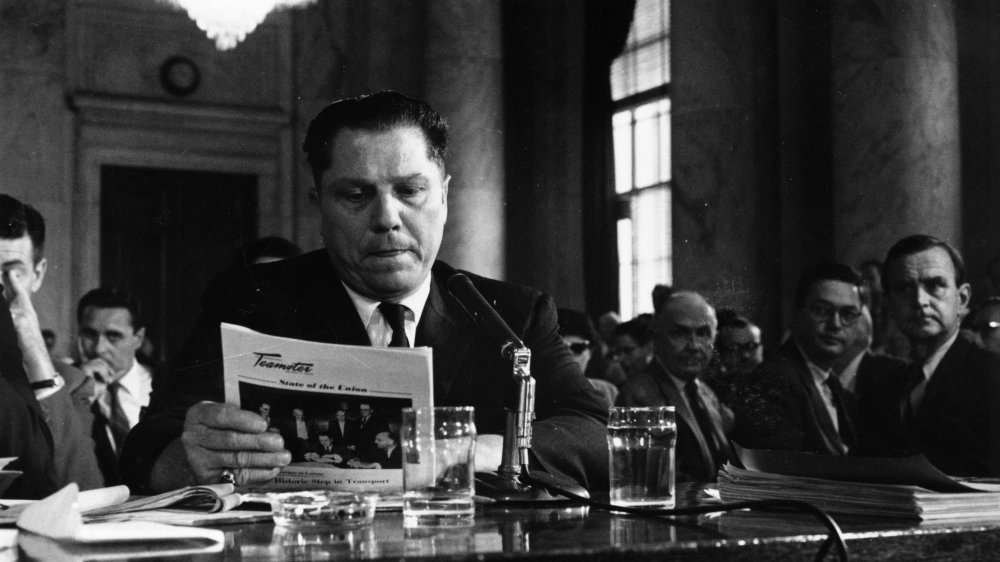
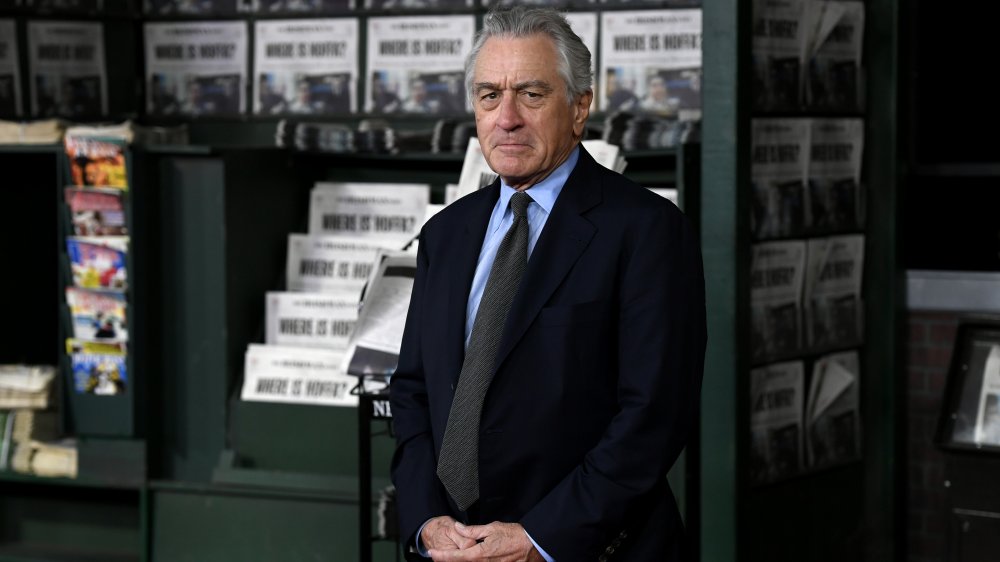
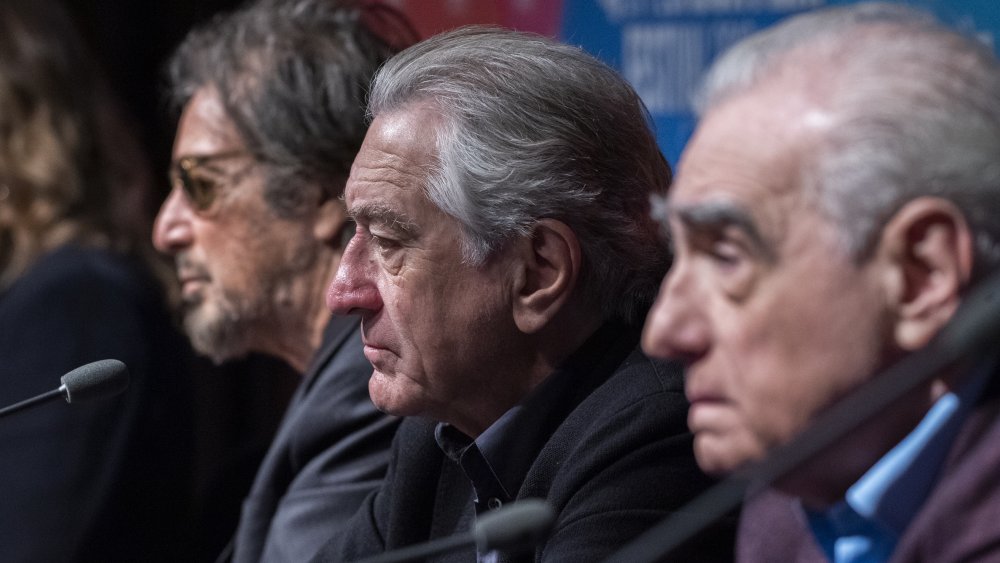
Post a Comment for "What Mob Family Did the Irishman Assiciate With"